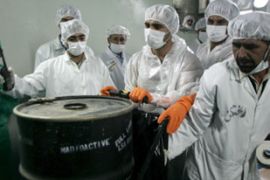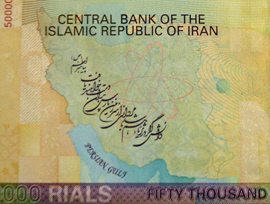Strike ‘may incite nuclear Iran’
Leading think-tank says military action on Iran may speed up its nuclear programme.

“It would be a bit like deciding to build a car from spare parts instead of building the entire car factory. Put simply, military attacks could speed Iran‘s progress to a nuclear bomb.”
Hardening Iranian attitudes
| Oxford Research Group |
|
“Military strikes against Iran will simply not work. Indeed they could even bring a nuclear-armed Iran closer.”
John Sloboda, Oxford Research Group executive director |
The report suggests air strikes, like those allegedly being considered by the US and Israel, would harden Iranian attitudes and political resistance to outside pressure to stop uranium enrichment.
The Islamic republic would then focus on manufacturing one or two nuclear devices, leading to a nuclear-armed Iran within one or two years, it added.
Blix, who headed the UN monitoring verification and inspection commission in Iraq, backs the report’s assessment.
| Your Views |
|
“I believe there is a widely available diplomatic solution that the people of both America and Iran want”
|
He wrote in the report’s foreword: “Armed attacks on Iran would very likely lead to the result they were meant to avoid – the building of nuclear weapons within a few years.”
The report argued that military action would probably result in a high number of civilian casualties, as a surprise attack would inevitably catch many people unawares and unprotected.
Air strikes would have to hit many well-protected targets across Iran, including the Kalaye Electric Company, which produces components for gas centrifuges used in uranium enrichment.
Secret facilities
 |
| Parts of Bushehr are still under construction [AFP] |
Other targets would include the Bushehr nuclear reactor, the Arak heavy water reactor and heavy water production plant, uranium enrichment facilities at Natanz, uranium mines at Saghand and the research reactors at Isfahan.
But the report said there was a “real possibility” Iran had built secret facilities elsewhere as well as “false targets” in anticipation of air strikes.
“With inadequate intelligence, it is unlikely that it would be possible to identify and subsequently destroy the number of targets needed to set back Iran‘s nuclear programme for a significant period,” the report said.
The report suggested that Iran could salvage enough material for a bomb from the reactor at Bushehr after any attack, or turn to the black market, where small amounts of uranium or plutonium would be easy to smuggle.
“It is a mistake to believe that Iran can be deterred from attaining a nuclear weapons capability by bombing its facilities,” the report said.
“In the aftermath of a military strike, if Iran devoted maximum effort and resources to building one nuclear bomb, it could achieve this in a relatively short amount of time: some months rather than years.”
Fiscal celebration
Meanwhile
 |
| The banknote contains the nuclear insignia of electrons in orbit around an atom [AFP] |
Iran has announced it is to issue a new high-denomination banknote marking the country’s achievements in nuclear technology.
The new 50,000 rial note – around five dollars worth more than twice the value of any other note in circulation – sports a picture of the standard nuclear insignia of electrons in orbit around an atom.
John Sloboda, Oxford Research Group’s executive director, said: “This report doesn’t get into the rights and wrongs of military strikes. It asks whether they will achieve their objectives.
“The conclusions should be food for thought for even the most hawkish: military strikes against Iran will simply not work.
“Indeed they could even bring a nuclear-armed Iran closer.”